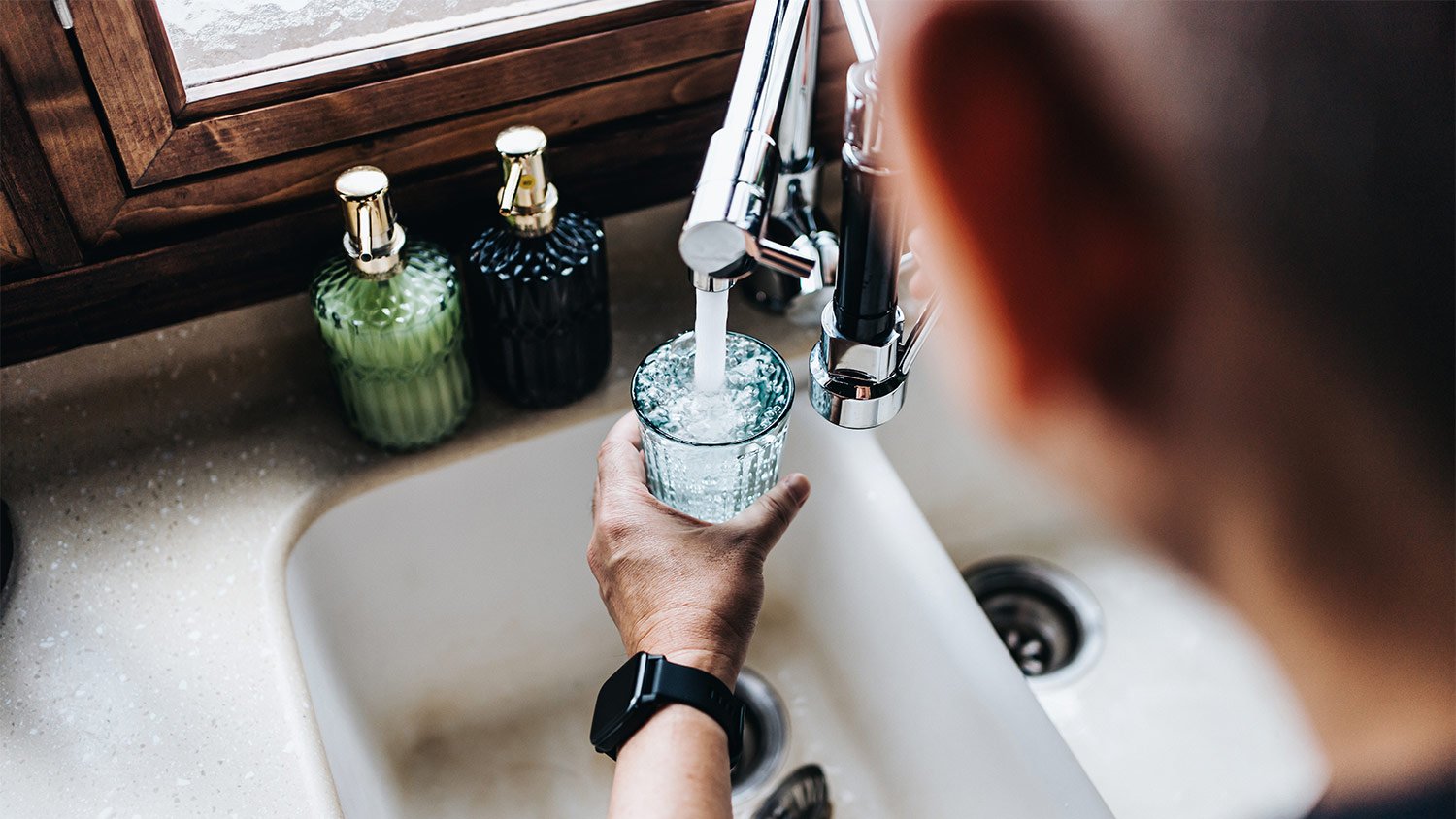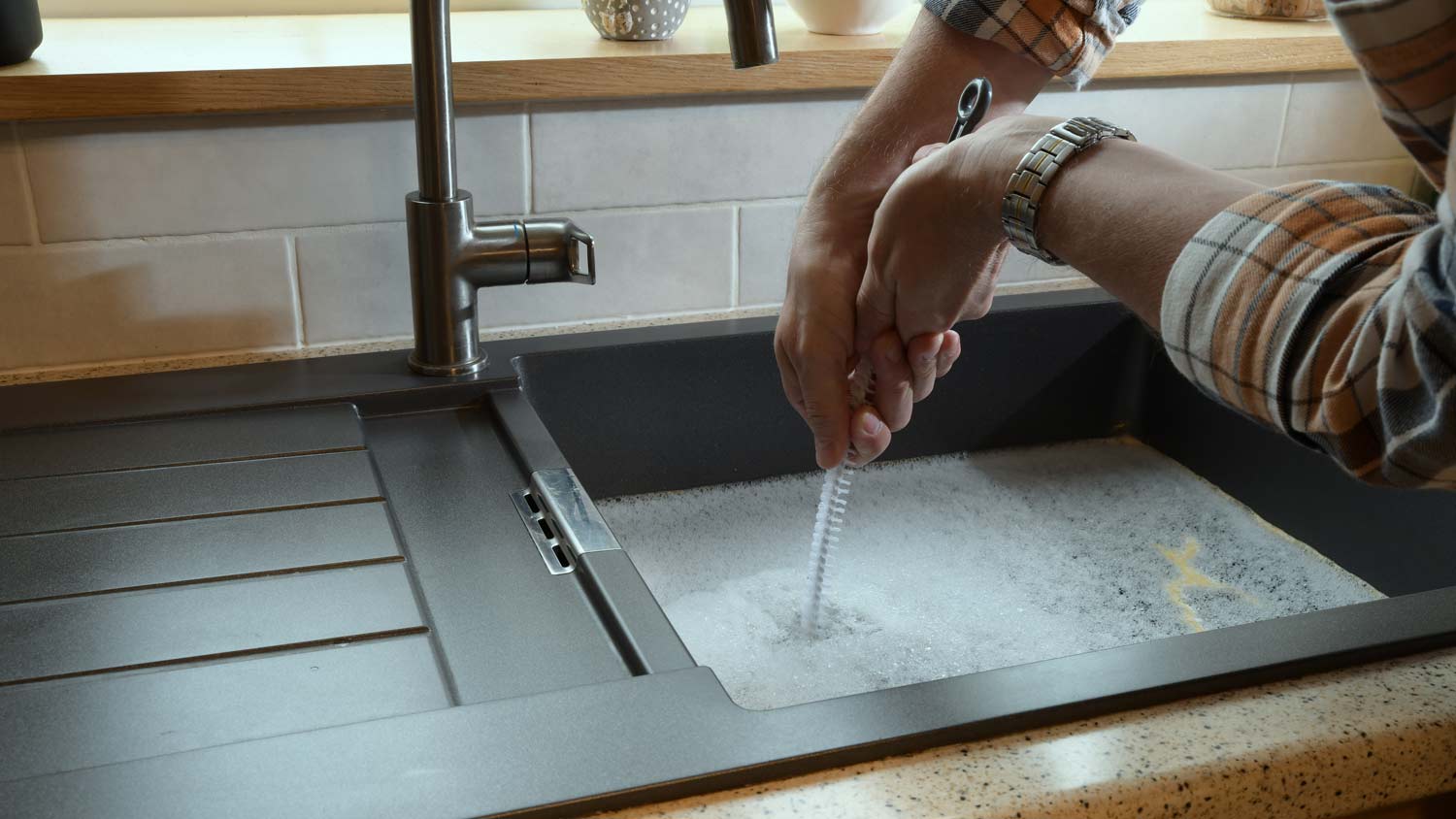How Much Will It Cost to Clean My Drain? [2025 Data]
The cost of drain cleaning is about $241, but ranges between $147 and $344 depending on the clog.


The location and severity of the clog and the type of drain are major cost factors for drain cleaning.
Different types of drains require different cleaning methods, and sewer
main line repairs are the most costly.
DIY drain cleaning is possible with tools like plungers and drain snakes, but call a licensed pro for complex issues.
Multiple clogged fixtures, gurgling noises, and standing water above the pipe can indicate a sewer line clog.
The cost of drain cleaning averages about $241, but it can fall between $147 and $344, depending on the location and extent of your clog. There is nothing like a backed-up drain to derail your plans. Luckily, there are different solutions that will have you—and your pipes—back on the move in no time.
How Much Does It Cost to Snake a Drain?
Some companies charge a flat fee for drain snaking, and others charge by the hour. Find a local plumber who will come in with a heavy-duty snake and pull the clog right out. Here's a rundown of average prices for drain cleaning, depending on the location of the clog:
| Location | Average Cost |
|---|---|
| Toilet | $110–$275 |
| Kitchen sink | $110–$215 |
| Bathtub/shower | $225 |
| Sewage main line | $100–$800 |
How Much Does It Cost to Clean Different Types of Drains?
Most plumbers will charge for time and materials. Drain cleaning is a relatively quick job for a pro with heavy-duty tools. So unless there are complications, assume an hour or two for labor.

Kitchen Sink and Garbage Disposal
The plumber will first assess your garbage disposal to make sure that it’s working. If the garbage disposal needs replacing, expect to pay $60 to $300 for parts plus at least two hours of labor.
Bathtub or Shower Drain
Shower and tub drains tend to get backed up, especially if errant hair gets past your drain screen and soap scum builds up. Calling a pro out to remove the clog costs about $225.
For the most inexpensive fix, try the plunger method and drain snake cleaning tips detailed below.
Toilet
Expect to pay a pro the hourly rate to unclog a toilet. For about $110 to $275, you should be back in business.
Kids and their love of finding out what would happen if they tossed something in are often the reason why random objects end up in the toilet. Accidents happen, but try and teach little ones that only toilet paper gets flushed.
Sewer Main Line
There are a few tells that the clog is somewhere bigger than the drain you’re peering down into. By that, we mean the real culprit is in the sewer main line that takes dirty water to the treatment plant.
Multiple plumbing fixtures appear to be clogged
Weird things happen, like water appears in the shower when you flush the toilet
A sulfur (rotten eggs) smell
Bubbling or gurgling noises at the drain
Changes to the yard, such as a new indentation or soggy grass when it hasn’t rained
If you notice any of these, your best bet is to call a professional for an assessment. If it’s a simple sewer main clog, you can expect to pay $200 to $300 to get it cleaned. Unfortunately, the price of sewer line repairs doesn’t get better from there.
What Will It Cost Me to Clean a Drain Myself?
You can clear the most common drain clogs yourself using things you already have around the house.
Plunger Method: Start with a plunger, even in a sink or shower. Fill the sink with water (with the stopper in). Position the plunger over the drain and open it. Pump the plunger 15 or so times. See if the water starts draining and repeat if necessary.
Drain Snake: Next try using a drain snake (a flexible plastic one from a hardware store for about $5). Feed the snake down the drain and pull it out. Hopefully, you’ve dislodged the clog. If the clog is farther down, you might need an electric drain cleaner for around $100 or call a pro.
Clean the P-Trap: If other options fail, clean the P-trap (the bent pipe under the sink). Shut the water off at the sink, position a bucket under the pipe, and loosen the nut on either side of the P-trap with a wrench. Knock out any gunk inside of it, reattach it, turn the water on, and see if it drains. For deeper clogs, you could rent an auger for about $100 or buy one for $250 to $3,250, but it might be more practical to call a local drain cleaner who already owns the tools.
How Angi Gets Its Cost Data
Home is the most important place on earth, which is why Angi has helped more than 150 million homeowners transform their houses into homes they adore. To help homeowners with their next project, Angi provides readers with the most accurate cost data and upholds strict editorial standards. We’ve surveyed over 30,000 real Angi customers about their project costs to develop the pricing data you see, so you can make the best decisions for you and your home. We pair this data with research from reputable sources, including the U.S. Bureau of Labor Statistics, academic journals, market studies, and interviews with industry experts—all to ensure our prices reflect real-world projects.
Want to help us improve our cost data? Send us a recent project quote to costquotes@angi.com. Quotes and personal information will not be shared publicly.
Frequently Asked Questions
The first rule of plumbing is nothing but water, toilet paper, number one, and number two go down the drain.
To prevent clogs, get yourself:
A compast pail where you can clean plates, drain grease, and toss scraps and paper towels.
Drain screens for the shower, tub, and bathroom sink to stop hair, jewelry, toys, etc. from going down the drain.
Trash cans for everything that shouldn’t go down the drain, like dental floss, hygiene products, and cat litter.
P.S.: If you do drop your priceless ring down the drain, take a deep breath, and then follow these steps to retrieve jewelry from your drain.
Liquid drain cleaners are harsh chemicals that can erode your pipes. To treat a slow drain or for preventative maintenance, pour hot water down the drain to break up gunk and help move it along. Make sure the water isn’t boiling hot (keep it under 140 degrees Fahrenheit) if you have plastic pipes. However, you’ll need to pull the clog out for bigger backups.
Whether you snake the drain yourself or call a pro, it doesn’t take more than a few minutes. You can probably do it in a commercial break.















